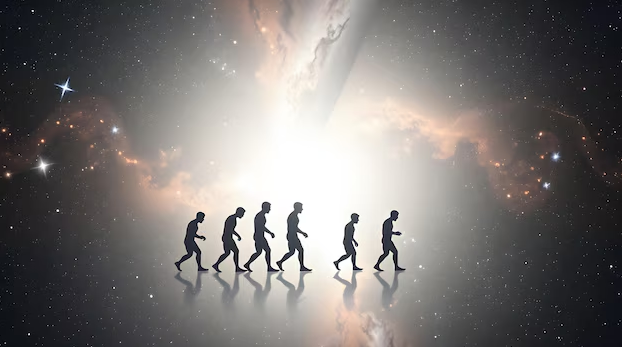Modernity and technology walk hand in hand. Both men and women have contributed to human success
Modernity is both a philosophy of life and a way of living. Technology is one of its manifestations. Their relationship is akin to that between a mother and child. In the world of knowledge, this is not a new subject. Scholars have been discussing it since the 19th century. Now, both influence each other. Modernity has provided new ways of thinking, which gave birth to technology. When the technology matured, it developed the ability to create wonders which resulted in the emergence of new ways of living.
Modernity took the form of a philosophy of life when humans accepted that they are essentially rational beings. Even before modernity, humans were rational, but their reasoning was constrained by various forces. One of these forces was superstition, which in Europe was presented under the guise of religion by the Church. Whenever a person sought to resolve an issue through reason, religious authorities (the church) would intervene. As a result, people could not dispel the darkness in their lives with the light of reason. Some individuals showed courage and tried to dismantle the barriers that stood between humans and reason. They paid a price for their efforts but ultimately succeeded.
The result of this success was that humans accepted reason as the authority for solving social, economic, and political problems. This marked the beginning of modernity. Humanity continued to accept the rulings issued by the court of reason. There were two main sources of reason: observation and experience. To be precise, let’s refrain here from addressing the question of whether the absolute authority of reason is right or wrong. It suffices to know here that humans accepted the rule of reason. Now, if religion or any other force wished to survive, it had to submit to the authority of reason; otherwise, it would be exiled from society.
The most significant outcome of the authority of reason was the rejection of the divinity of natural phenomena. Humans refused to believe that diseases were caused by the displeasure of a deity. They no longer regarded the sun and the moon as gods and instead focused on conquering natural phenomena. It was reason that pointed them in this direction. Reason not only transformed human thinking about the universe but also altered concepts and perceptions about humans and humanity. As the perception changed, the structure of society also began to transform. Ways of living evolved. The means of production changed as well, and humans transitioned from an agrarian society to an industrial one. The change in the means of production meant a change in technology. This new technology influenced social structures and forced man to adapt new way of life.
In an agrarian society, human life depended on farming. The way of life was tribal. During that era, physical strength was the most crucial factor in the means of production and for protection. Societies with stronger, more capable arms would prevail in the struggle for survival. Men, being physically stronger than women, were considered more significant, and having male offspring was highly valued. A larger number of people symbolized greater strength, which reinforced the joint family system.
Humans listened to reason and began thinking about improving the means of production. They invented the steam engine, marking a transition from the agrarian age to the “industrial era.” Technology transformed their way of life, replacing villages with cities—a necessary consequence of this major shift. This leap, guided by reason, led to the recognition of the mind’s superiority over the body. During this time, it became evident that while women might be physically weaker than men, they were intellectually equal. In the industrial age, women could play a valuable role in the progress of society, just like men. As a result, the social status of women began to change, and the desire for male offspring gradually diminished. Urban life completely transformed human thinking and lifestyle.
The wonders of reason did not remain confined to just one area. With the help of reason, humans began solving their various political, economic, and social problems. Old social, political, and economic institutions were replaced by new ones. The world transitioned from monarchy to democracy. Knowledge, once a unified field, began moving towards specialization and divided into multiple disciplines. As the hidden secrets of the universe were uncovered, new concepts about it emerged, and the desire to conquer it became difficult to restrain. Technology created not just one but many marvels. Humans began flying in the skies and exploring the depths of the oceans. Technology started shaping society, and women now stood side by side with men.
Just as humans have always been rational beings, they have also possessed an aesthetic nature. Additionally, they have a moral existence. Under the authority of reason, when they sought to satisfy their aesthetic sensibilities, the fine arts transformed. Technology showcased its potential, and from painting to music, the tools of every art form changed. Calligraphy, once the marvel of the human hand, is now often produced with the aid of computers. Even the treatment of physical ailments is now facilitated by technology.
In this journey, modernity and technology walk hand in hand. Both men and women have contributed to human success. There is no field of life in which women lag behind men. Women make up approximately fifty percent of every society. It defies common sense to think that the journey of progress can continue while keeping half of the population away from the functioning of society. If women are not educated, every task will depend solely on men. If only men are physicians, then men will treat women as well, altering traditional concepts of gender segregation. Otherwise, women would be left to die, disrupting gender balance in society. Such an imbalance would prevent society from surviving under the laws of nature.
A society that wants to accompany humanity on the journey of civilization must accept the progress made thus far and join it. It cannot proceed on its own terms but must follow material advancement as a learner. In this journey, modernity and technology support each other and cannot be separated. However, there is a gap in this civilizational journey—one that is spiritual and moral. If someone has a remedy for this gap, they can make the journey more pleasant, though they cannot change the path of this caravan. Those unwilling to accept this must then continue on a separate path, embarking on a different experiment. There is no guarantee that their caravan will not reach its destination. However, the destination of both caravans will not be the same.
(The author teaches Geography at GDC Kulgam and can be reached at: [email protected])








